Art & Exhibitions
Last Minute Art Getaways: “Hokusai” at the Museum of Fine Arts, Boston
The artist changed his name over 30 times throughout his career.
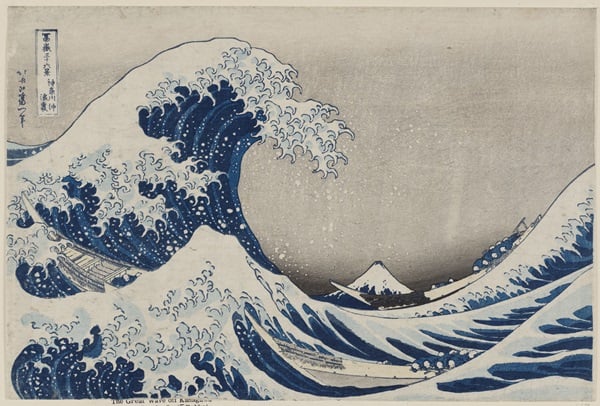
The artist changed his name over 30 times throughout his career.

Ariana Nakhla

So you woke up late on the weekend, and need to get out of the city to see some art, but you haven’t had time to plan. No problem: We’ve done the research for you. Here’s our pick for a great emergency art getaway this week.
Who: Katsushika Hokusai (1760–1849) is a Japanese artist of the Edo period, who is renowned for his ukiyo-e paintings and prints. The artist changed his name over 30 times throughout his career, and with each new name came a new phase of his artistic practice: Hokusai transitioned through stages of brush paintings, art manuals, book illustrations, and even sculptures throughout his 61 years of active artistry. Yet through his decades of artwork, Hokusai maintained his crisp, detailed lines, his muted tones yet rich palette, and his flat planes yet clear perspective, from his depictions of sprawling valleys to his fifteen volumes of signature manga.
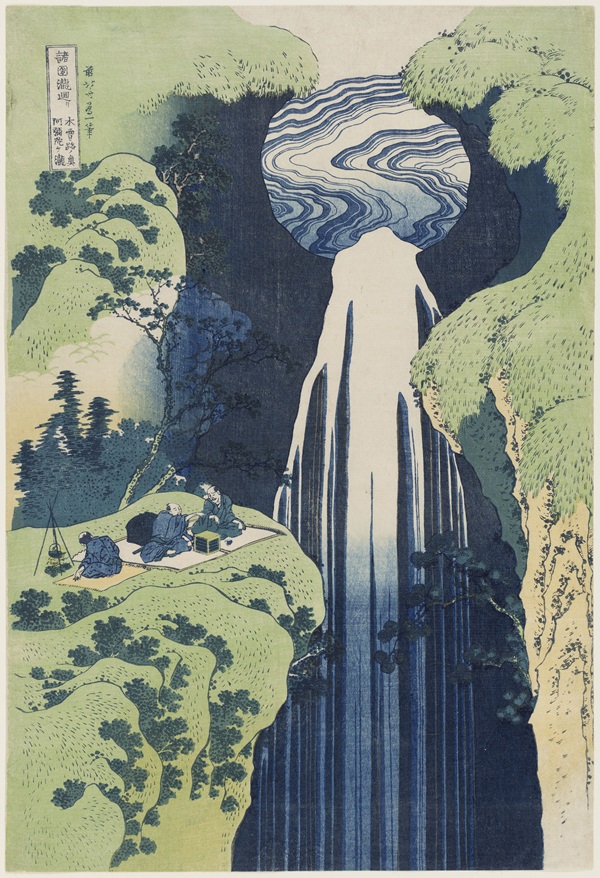
The Amida Falls in the Far Reaches of the Kisokaidô Road (Kisoji no
oku Amida-ga-taki), from the series A Tour of Waterfalls in Various
Provinces (Shokoku taki meguri)
Katsushika Hokusai (Japanese, 1760–1849)
about 1832 (Tenpô 3)
Woodblock print (nishiki-e); ink and color on paper
* William Sturgis Bigelow Collection
* Photograph © Museum of Fine Arts, Boston
Hokusai secured his fame within Japan with his collection of prints entitled 36 Views of Mount Fuji, which was published under the name “Iitsu.” Employing Prussian blue ink, the famed collection brought to life the iconic print Under the Wave Off Kanagawa (The Great Wave), which perhaps you have seen lent to the advertisements of Levi’s or Patagonia, or metamorphosed into an emoji on your smartphone.
Noted as a “father figure of much of Western modernism,” Hokusai is regarded as an important figure of the Impressionist movement. Although his work did not extend beyond Japanese borders until the 1850s, Hokusai’s unprecedented style did not fail to heavily influence the practices of Monet, Degas, Cassatt, and Lautrec.
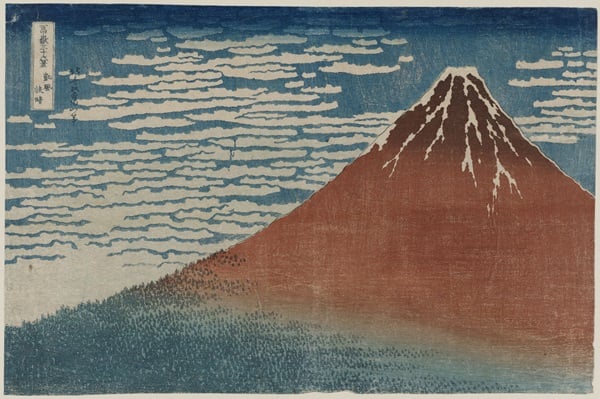
Fine Wind, Clear Weather (Gaifû kaisei), also known as Red Fuji,
from the series Thirty-six Views of Mount Fuji (Fugaku sanjûrokkei)
Katsushika Hokusai (Japanese, 1760–1849)
about 1830–31 (Tenpô 1–2)
Woodblock print (nishiki-e); ink and color on paper
* Nellie Parney Carter Collection—Bequest of Nellie Parney Carter
* Photograph © Museum of Fine Arts, Boston
What: Hokusai, currently on view at the Museum of Fine Arts, Boston, is a retrospective exhibition of the artist’s best work throughout his seven-decade career. With the largest collection of Japanese art outside of the native country, the museum’s showcase of the artist is comprised of over 230 works, including the full collection of 36 Views of Mount Fuji, The Great Wave, and Phoenix, as well as lesser known pieces such as Hokusai’s art manuals and dioramas. The exhibition is separated into seven themes: Urban Pleasures; Views of Mount Fuji; Waterfalls and Bridges; Ingenious Designs; Private Commissions; Nature Studies; and Legend and Literature. Together, these themes guide viewers through the many stages of Hokusai’s extensive and fruitful career, and provide a comprehensive study of the revolutionary figure’s transformation as an artist.
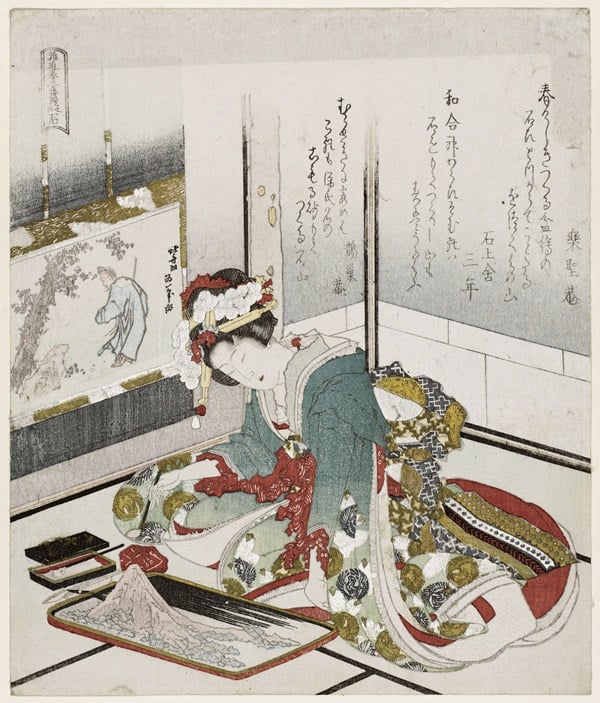
Stone (Ishi), from the series Three Pictures for a Children’s Hand
Game (Osana asobi ken sanbantsuzuki no uchi)
Katsushika Hokusai (Japanese, 1760–1849)
1823 (Bunsei 6)
Woodblock print (surimono); ink and color on paper
* William Sturgis Bigelow Collection
* Photograph © Museum of Fine Arts, Boston
Where: The exhibition will be on view through August 9th at the Museum of Fine Arts, Boston, which is located at 465 Huntington Ave, Boston, MA 02115.
When: The MFA Boston’s weekend hours are from 10am to 4:45pm, with free introductory tours available for visitors throughout the weekend.
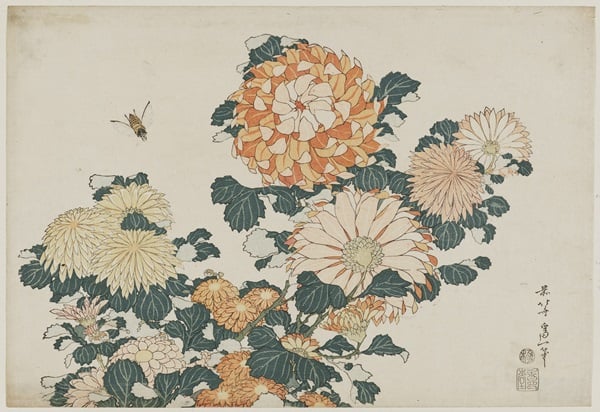
Chrysanthemums and Horsefly, from an untitled series known as
Large Flowers
Katsushika Hokusai (Japanese, 1760–1849)
about 1833–34 (Tenpô 4–5)
Woodblock print (nishiki-e); ink and color on paper
* William Sturgis Bigelow Collection
* Photograph © Museum of Fine Arts, Boston
Why: Hokusai’s unparalleled style will never cease to be celebrated. A true figure of 19th century Japanese culture, Hokusai’s work continues to hold a strong presence in artistic institutions internationally, with a two-part retrospective at the Grand Palais in Paris beckoning a two-hour long line only earlier this year.
And Hokusai isn’t the only noteworthy artist in Boston this weekend. Still at the MFA, Pastoral to Pop is a survey of unseen prints by prominent 20th century artists, including the works of Robert Bevan to those of Lucian Freud and David Hockney. The exhibitions features prints spanning a range of subjects, such as architecture, the human figure, and various forms of abstraction influenced by a fusion of Futurism and Cubism.
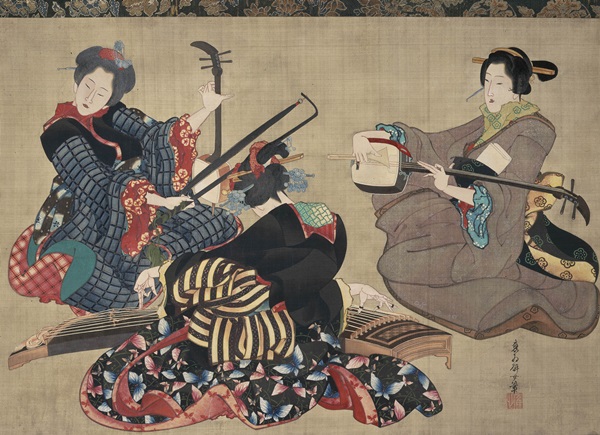
Gift cover (fukusa)
Katsushika Hokusai (Japanese, 1760–1849)
1844 (Koka 1)
Silk plain weave with ink and color
* William Sturgis Bigelow Collection
* Photograph © Museum of Fine Arts, Boston
You also don’t want to miss the work of Arlene Shechet, which is showcased in the artist’s first museum retrospective, All At Once, at the ICA Boston. On view through September 9th, the survey features over 130 of the artist’s sculptural works, whose range of materials include plaster, glass, paper pulp, clay, and ceramic. Shechet’s innovative, playful approach to the classic sculptural field is what Holland Cotter writing for the New York Times called “Some of the most imaginative American sculpture of the past 20 years.”
New England is abundant with gallery stops and museum exhibitions, both seaside and in the city. Click here for a full list of artistic sites to see.
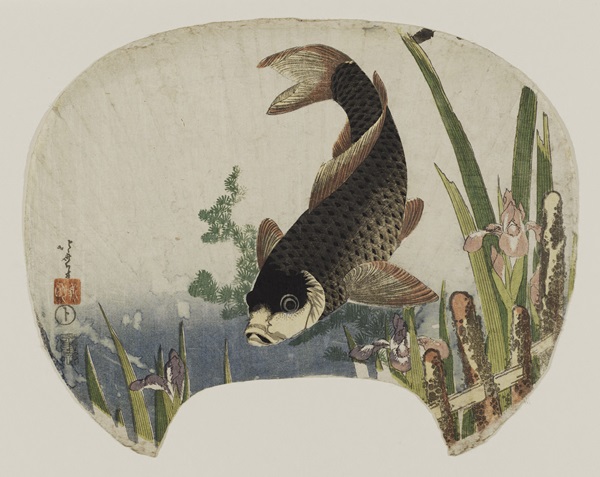
Carp and Iris
Katsushika Hokusai (Japanese, 1760–1849)
Woodblock print (nishiki-e); ink and color on paper
* William Sturgis Bigelow Collection
* Photograph © Museum of Fine Arts, Boston
Related:
Last-Minute Summer Art Getaways: Tara Donovan’s “Platform” at the Parrish Art Museum
Last-Minute Summer Art Getaways: Barbara Kasten’s “Stages” at ICA Philadelphia